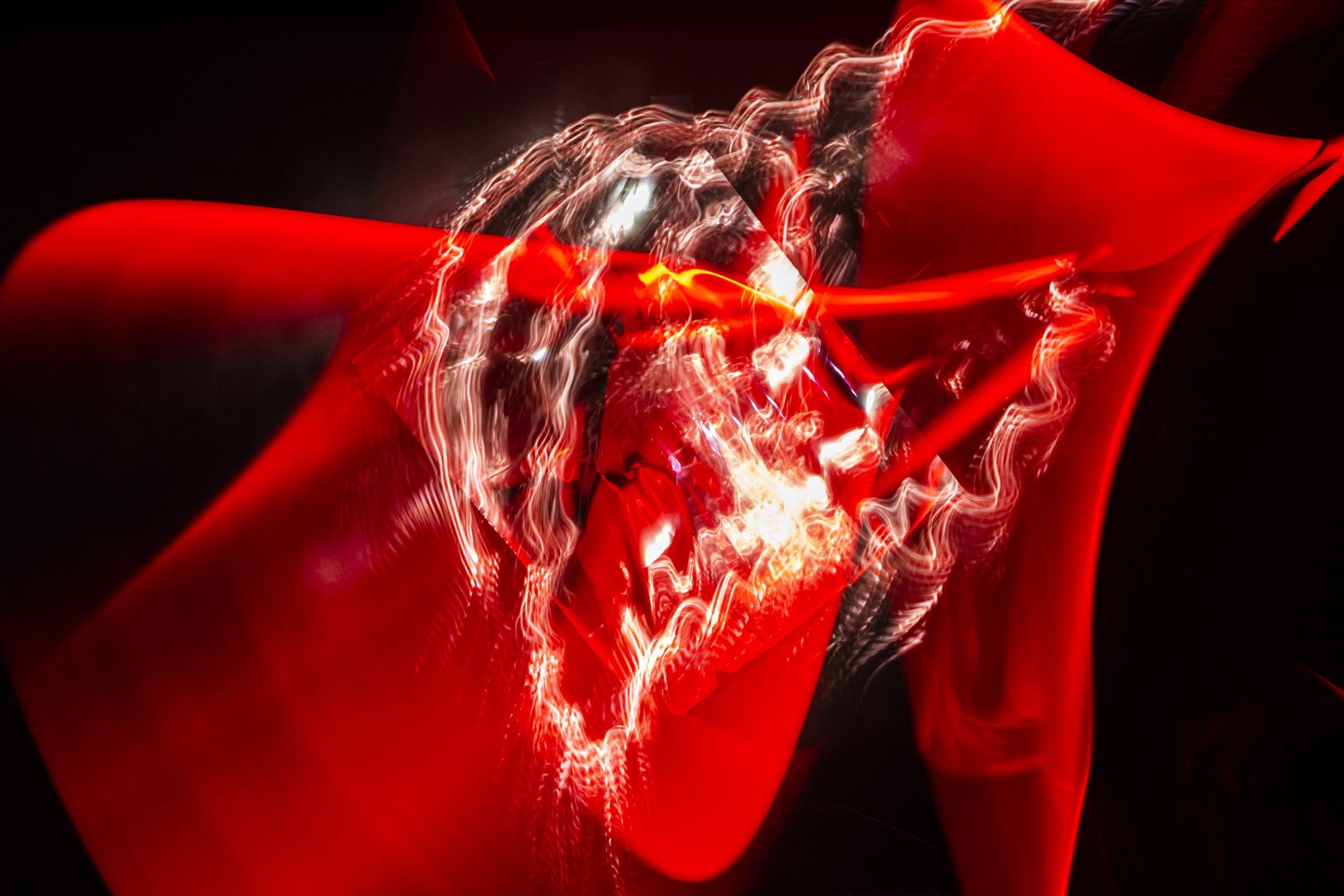
What is Light Painting?
Light painting is a captivating art form where light itself becomes the paintbrush, and the darkness serves as the canvas. By manipulating light sources in a darkened setting, artists can craft luminous trails, intricate designs, and surreal patterns that are captured in a photograph. The result is an image that captures both movement and stillness, revealing layers of creativity that can’t be seen with the naked eye.
Within the world of light painting, there are diverse styles and approaches, each offering its own artistic expression:
Light drawing focuses on creating recognizable forms, such as shapes, symbols, or words. It is the visual equivalent of calligraphy or graffiti, with light as the ink. Artists can sketch out ideas directly into the air, leaving a trail that glows like neon, guiding the viewer’s eye across the frame.
The elegance of light trails lies in their fluidity. These patterns can be simple, graceful arcs or complex, interwoven designs. The flowing ribbons of light that sweep through the composition often bring a sense of movement, echoing the paths of dancers, the curves of the wind, or the traces of dreams.
Light sculpture explores the three-dimensional aspects of this technique. Here, light wraps around objects or figures, outlining them, highlighting contours, and creating a ghostly, luminous silhouette. This style invites viewers to see familiar forms reimagined, as if the light is revealing an unseen dimension.
At its core, light painting is about exploration. It challenges conventional ideas of what a photograph should be, encouraging artists to experiment with time, light, and space in ways that traditional art forms do not. It’s a dynamic, kinetic practice that demands both precision and spontaneity—a delicate balance between control and chaos.
For the artist, light painting is a way to capture the ephemeral, to give form to something as intangible as a beam of light. It’s about drawing out the hidden beauty within darkness and creating something that feels both deliberate and otherworldly. The process invites artists to become performers, sculptors, and painters all at once, blending elements of theater, sculpture, and photography.
What makes light painting so intriguing is the endless possibility it offers. Artists can experiment with different light sources, from flashlights to lasers, creating compositions that range from soft, ethereal glows to sharp, piercing lines. The colors, patterns, and textures that emerge can evoke a wide range of emotions—from tranquility to chaos, from simplicity to intricacy.
Moreover, light painting isn’t confined to any one setting. It can be performed in the stillness of a studio, on the streets of a city, or against the backdrop of a natural landscape. This versatility allows artists to explore themes of contrast—light versus dark, order versus chaos, reality versus imagination.
Each piece of light painting is, in many ways, a collaboration between the artist and the environment. The darkness becomes a canvas that waits for illumination, while the light becomes a tool of transformation.
Light painting is more than just a technique; it’s an invitation to see the world in a new way. It transforms light into something tactile, something that can be shaped, molded, and directed. For artists, it offers a new way to express themselves, to capture the fleeting and the ethereal, and to create pieces that are as much about process as they are about the final image.
As I continue to explore and teach the possibilities of light painting, it’s clear that this art form is not just about capturing a moment—it’s about creating moments. It’s about finding beauty in the unseen, and bringing it into the light.